| back to current program | ||
| 2012 | ||
| September 24, 2012 Stoney’s British Pub |
John Crocker Chemical Engineering, University of Pennsylvania “Biology Today: From Molecular Motors to Stem Cells” |
|
| October 1, 2012 Cavanaugh’s Headhouse Bar |
E. Kendal Pye Lignol Innovations LLP “Biofuels: A Game Changer” Since the first oil well was drilled in 1853, life has changed dramatically in industrialized countries. Low cost crude oil has allowed automobiles, aircraft, goods transportation by trucks and diesel locomotives to replace horses and sailing ships. Home heating oil, construction materials like plywood and counter top laminates, everyday items such as nylon and polyester clothing, plastic film, driveway coatings and styrofoam containers, also depend on low cost oil. But crude oil is a finite and non-renewable resource and many predict that the “easy”- and therefore cheap – oil will soon be depleted. Will this mean a major change in our life styles? Not necessarily, because by using new technology, woody biomass such as corn stover and straw, together with plantation trees not now needed by a declining pulp and paper industry, can be sustainable sources of chemicals and transportation fuels that replace those currently made from oil. Biorefineries that process woody biomass into useful chemicals and fuels will replace oil refineries, but will be environmentally benign, will create a major new domestic industry and will reduce the need for oil imports from politically unstable countries. These trends will be discussed. |
|
| October 15, 2012 Stoney’s British Pub |
William Watson Immaculata University, PA “Scientific Archaeology: The search for 57 dead Irishmen at Duffy’s Cut- a Murder Mystery” The search for the Irish immigrant work crew who died at Duffy’s Cut in 1832, during the construction of the Penn-Columbia railway line, will be discussed. This willinclude the discovery of the first seven graves of murdered workers who were reburied in March, 2012, and the ongoing search for the remaining 50 men. This work is being carried out in collaboration with Enviroscan Inc., and The University of Pennsylvania Museum. |
|
| November 5, 2012 Cavanaugh’s Headhouse Bar |
Charlie Johnson Physics & Astronomy, University of Pennsylvania “Nanosensor Technology: Graphene-enabled Molecular Detectors” Nanotechnology may provide the tools to create next generation chemical sensors that could be part of the transformation to a ‘smart society’, where sensor systems are integrated everywhere in our lives. In medicine, diagnostic tests based on protein biomarkers in blood or volatile gases emitted from the skin or in breath will fully revamp the health care landscape. Advanced chemical detection systems could revolutionize our ability to detect threats to human and environmental health, for example the release of airborne toxins from chemical facilities or contamination of water supplies, in real time and then respond immediately. The new chemical sensor technologies under development in my lab are based on insights from molecular biology married to graphene, a remarkable nanomaterial that we now grow in the lab one atom thick and 1 foot on a side! |
|
| December 10, 2012 Stoney’s British Pub |
 Lou Girifalco Lou GirifalcoUniversity Professor, University of Pennsylvania “The Creation of ENIAC: The Beginning of the Digital Age” In 1943, a convergence of circumstances set in motion a project that transformed the world. The ENIAC was not merely a new, powerful computing machine; it was the beginning of the digital information society that now dominates our lives. Its creation is a story of engineering genius, of courage in the face of powerfully entrenched opposition, of bitter human conflict and of stubborn perseverance. Lou Girifalco, Professor at the University of Pennsylvania and former Acting Provost of the University, Vice-Provost for Research, and Director of the Laboratory for Reseach on the Structure of Matter. Lou is an outstanding speaker with a fascinating story to tell and it is one which can be understood by all. Get there early, if you want a seat for this gripping, true tale!! |
|
| 2013 | ||
| January 9, 2013 World Cafe Live |
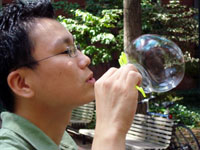 Daeyeon Lee, Chemical Engineering, University of Pennsylvania Daeyeon Lee, Chemical Engineering, University of Pennsylvania“Beers, Bubbles, and Beyond” A bubble is a globule of one substance in another, usually gas in a liquid. Bubbles can be found ubiquitously in foodstuff. Beer head, for example, is composed of bubbles of gas such as carbon dioxide, rising to the surface. Imagine drinking beer of champagne that do not have any bubbles, it just will not be the same experience. Our group is exploring a way to use bubbles, which are typically transient matter, as “materials” in biomedical and acoustic engineering applications. I will discuss examples of using stable microbubbles in ultrasound theranostics agents to detect and treat cancer and of using bubbles to generate sound cancelling panels to enable “paper-thin” sound proof systems. |
|
| January 21, 2013 Stoney’s British Pub |
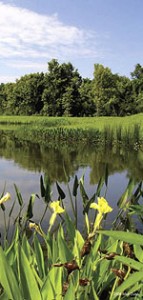 Marian Young Marian YoungPresident, Brightfields, Inc. Wilmington “Environmental Remediation: Turning brownfields into brightfields” Marian will tell us about the origin of EPA’s Brownfield Program and state programs that are removing liability and facilitating the revitalization of old industrial areas.We will learn what it takes to go from an industrial wasteland to a thriving new commercial/retail/residential center. Environmental scientists and engineers start with historic research to understand former property uses; then they collect and analyze soil and groundwater samples.The data is used to map contaminant locations and migration. Remedial cleanup plans are based on contaminant behavior in soil and groundwater, health risks, and planned future use. Marian will provide a case study of Wilmington’s Christina Riverfront revitalization. Marian Young is the President of BrightFields, Inc. in Wilmington, Delaware.She received her B.S. degree in Agronomy from Delaware Valley College of Science & Agriculture in 1980, and continued graduate studies in Hydrogeology and Soil Chemistry at the University of Delaware. |
|
| February 13, 2013 World Cafe Live |
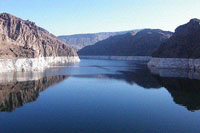 Larry Hough Larry HoughRhodia Inc. “Future Water Shortages: Resolution through Science and Technology” 2012 was the hottest recorded year on the planet. It is well predicted that water stress will be a key issue for the future development of the human population. In the next 20 years we need to produce more food than has been produced in the last 10000 years. In this context, we will discuss water stress in agriculture and natural solutions to the problem. With the addition of chemically modified natural soil additives, we will show that better germination and drought resistance can be achieved for crops. As the population grows and the drought cycles become more frequent, creative solutions will be required to sustain even the most fertile lands. |
|
| February 18, 2013 Stoney’s British Pub |
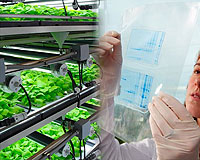 Mark Jones Mark JonesFraunhofer Center for Biomolecular Technology, Newark DE “Plants for better health: The role of plant biotechnology in the generation of new vaccines and therapeutics.” The Fraunhofer USA Center for Molecular Biotechnology (FhCMB) is a unique institution conducting research and development in the areas of plant and microbial biotechnology. Its main focus is on using plant-based systems for rapid, inexpensive production of vaccines, therapeutics and diagnostics. The Center has assembled a diverse staff, with expertise in plant virology, molecular biology, plant biology, biochemistry and immunology, and has core research groups specializing in expression technologies and protein target design, plant tissue culture, engineering and biomass production, downstream processing and analytical biochemistry, and immunology and formulation. FhCMB has continued to improve its core technology for transient gene expression and its application to the development of new products. To respond to rapidly emerging disease threats and market needs, FhCMB has further refined and scaled up its unique, accelerated plant-based protein production platform. The core technology is based on using ‘launch vectors’ to rapidly produce high levels of target proteins in non-genetically modified plants. Key advantages of the technology are that it is relatively inexpensive compared to producing proteins in microbial or animal cell bioreactors, it provides a safer source of proteins than native sources or animal cell systems, and, unlike transgenic plant or animal systems, relatively large amounts of target protein can be accumulated within a few days. |
|
| March 11, 2013 Stoney’s British Pub |
 Dr. Jennifer Mass Dr. Jennifer MassSenior Scientist, Winterthur Museum “Using Synchrotron Radiation to Study Matisse: X-ray Fluorescence in Art & Archaeology” The scientific analysis of objects of art is carried out to address questions about a work’s authenticity, construction, state of preservation, and mechanisms of degradation. Given the irreplaceable nature of the works studied, this research must be conducted either totally nondestructively or on microsamples alone. X-ray fluorescence (XRF), a nondestructive elemental imaging technique, has been used with conventional microanalysis methods to study Henri Matisse’s masterpiece Le Bonheur de vivre (The Joy of Life, 1905-6, The Barnes Foundation). This was undertaken to identify the origin of the fading, darkening, and flaking of its yellow paints (see images below of this work compared to the work’s final oil sketch from the Museum of Modern Art, San Francisco). These alterations were identified in the painting’s cadmium yellow pigments, and current data suggests a photodegradation of the cadmium sulfide that has also been observed in turn of the 20th century works by Picasso, van Gogh, Seurat, and Leger. The implications of this phenomenon for the preservation and interpretation of Matisse’s seminal work will be discussed. X-ray fluorescence has also been used to nondestructively reproduce a buried painting by N.C. Wyeth. Several of Wyeth’s most valued illustrations have been lost from view because they were painted over, either by N.C. himself or by his son, groundbreaking 20th century American artist Andrew Wyeth. The first virtual reproduction of one of Wyeth’s buried works is presented here. We have also used XRF to probe The Armorer’s Shop (1644), attributed to Flemish genre painter David Teniers the Younger (1610-1690). Confocal XRF data, along with dendrochronological and infrared reflectography data, provided a chronology of construction suggesting that the painting is the only surviving collaboration of Teniers with Flemish Baroque painter Jan Brueghel the Younger ( |
|
| March 13, 2013 World Cafe Live |
 Peter Collings, Physics, Swarthmore College Peter Collings, Physics, Swarthmore College“Liquid Crystals: An Oxymoron Necessary for Life and the Basis of Modern Displays” Liquid crystals are a phase of matter just like the more familiar phases of matter (solids, liquids, and gases). Yet the properties of liquid crystals are so unique that they are both the fundamental building blocks of biological structure and the basis for the displays found in laptop computers and flat panel televisions (LCDs). The reason for these extraordinary properties is that liquid crystals represent a natural, delicate balance between the absence of all molecular ordering found in liquids and the high degree of molecular ordering found in solids. Additional applications are already in use and more are on the way. |
|
| April 1, 2013 Stoney’s British Pub |
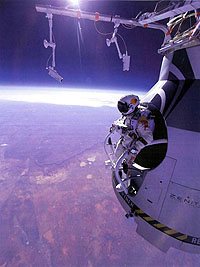 Bill Berner Bill BernerPhysics, University of Pennsylvania “Free Fall and More: The Science of Getting Down” Motivated by the first person to fall faster than the speed of sound, we’ll have a look at how and why things fall. Along the way we’ll find out why hail storms are not (usually) hard hat areas. We’ll explain why it makes financial sense to replace a cheap parachute on the Mars lander with an expensive rocket motor. And we’ll look at some unpowered objects that actually fall faster than gravity with no outside help. By the end of the talk attendees will be able to speak with enhanced gravitas about nearly any weighty topic. |
|
| April 10, 2013 World Cafe Live |
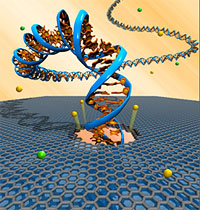 Robert Johnson Robert JohnsonPhysics & Astronomy, University of Pennsylvania “Ultrafast DNA sequencing – Speed reading the blueprint of life” The blueprints of a living creature are stored in long, chainlike molecules known as DNA. These blueprints are written in a code format using four chemical bases called A, C, G and T. The particular sequence of these bases determines almost everything about the creature including what type of creature it is, what it eats, what it looks like and how long it lives. We can learn an extraordinary amount about a living organism by reading the sequence of bases in its DNA. However, the number of bases in an organism’s DNA can be enormous and reading them all can be time consuming and expensive. For example, human DNA contains about 3 billion bases. The first complete sequence of human DNA was obtained in 2003 after about 12 years of work costing almost $3 billion. Cheaper, faster and more reliable methods to sequence DNA are highly desirable. These methods would not only facilitate biological research but also revolutionize medicine and personal healthcare. The ability to speed-read DNA could be achieved by threading DNA molecules through small holes in graphene (pictured above), a material closely related to graphite (pencil lead). In this talk I will describe current research towards the development of ultrafast DNA sequencing technology and how such technology could impact society. |
|
| April 24, 2013 World Cafe Live 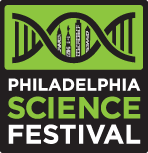 |
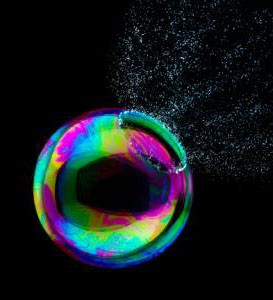 Daeyeon Lee, Chemical Engineering, University of Pennsylvania Daeyeon Lee, Chemical Engineering, University of PennsylvaniaBruce Bryant, Monell Center “Don’t Burst My Bubble”
A mixture of engineering, sensory science, and physics will bubble up to discuss – and demonstrate – the science of bubbles. How are these wonderful spheres formed? How big can they get without popping? Don’t miss this opportunity to learn everything bubbly you ever wanted to know! |
|
| May 29, 2013 World Cafe Live |
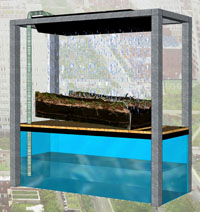 Monika Mickute Monika MickuteEngineering, Drexel University “Design and Construction of a ‘Green Roof'” Words “sustainability” and “green” have become rather common, if not dominant, in media coverage, government discussions, and even “happy-hour” conversations. There are many reasons for this sudden “green” trend, as there are numerous fields it surfaces from. A Vegetated (Green) Roof is just one of the paths towards a sustainable future. There are different types of green roofs, providing many different benefits and disadvantages. Currently, green roof installations are feasible on large, newly designed commercial buildings, ignoring single family homes; which limit the benefits vegetated roof are designed to provide. Select few students at Drexel University decided to develop a solution and design a green roof light enough and affordable enough to be both suitable and feasible to be installed by homeowners. The preliminary results were astounding, with maximum weight of less than 10 pounds per square foot, while still managing 1 inch storm events. This do-it-your-self vegetated roof has so much potential in managing rainwater while providing many other benefits to homeowners that the EPA felt if worthy $75,000 research grant for further development. |
|
| May 20, 2013 Stoney’s British Pub |
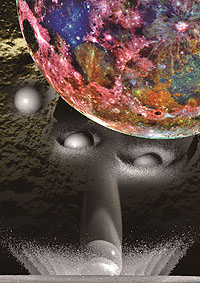 Doug Durian Doug DurianPhysics, University of Pennsylvania “Grains of Physics” Sand is a problem. At the beach it’s fun to scoop and pour, and to make sandcastles. But it’s hard to walk on and it sticks everywhere, plus those sandcastles start crumbling right away. The beach can turn to quicksand, and sandy bluffs can collapse in avalanches. Similar problems arise in desert, lunar, and Martian environments. Industries struggle with processing food grains, pharmaceutical powders, minerals for making ceramics and concrete, as well as with coal and geologic formations holding oil and gas. In short, we need to deal with granular materials to secure our food, medicine, shelter, and energy. Unfortunately, lots of things still go wrong. At a basic level, we lack a good understanding of how “sand” either flows or jams up under applied forces. This is a mechanics problem, and it is difficult because unexpected behaviors emerge for large collections of even the simplest objects like grains. I’ll survey this background, explain why physicists have latched onto “sand” as a cutting-edge research topic, and describe some research from my own laboratory on impact cratering and intermittent avalanche flows. |
|
| June 12, 2013 5:30PM START TIME World Cafe Live |
 Mojca Čepič, Jerneja Pavlin, Maja Pečar Mojca Čepič, Jerneja Pavlin, Maja PečarFaculty of Education University of Ljubljana, Slovenia “Liquid Crystals and Other Anisotropic Materials – Our Every Day Friends” Several of the materials we use every day have very interesting properties. Some of them are transparent but can become colored by simple tricks and some of them allow us to see what we type into our computer. We will show and the audience will perform several interesting, hands-on experiments, which will introduce them to the unusual properties of various materials like plastics but with emphasis on liquid crystals. We will also show how these interesting properties are applied in the LC screens of our computers. |
